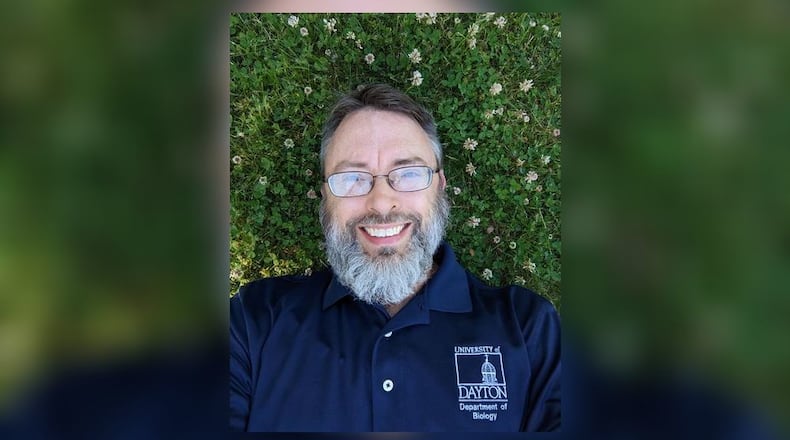When I am not spending time in my lawn, I am a biologist at the University of Dayton. In my research laboratory, we try to understand how different natural habitats function and what causes problems in these areas. Natural habitats like forest and prairies are beneficial to humans in many ways and it is critical that we take care of them.
Lawns are a natural habitat, and the homeowner is the manager of these little ecosystems. On your next drive through Dayton, take stock of just how much space is being taken up by lawns. You might estimate that there is more lawn than many other kinds of habitat in the region like prairies or wetlands. Because there is so much space covered in lawns, the choices we make can add up to enormous impacts on the natural world and on human health.
Many homeowners apply chemicals to their lawns to kill off pesky bugs and weeds. In fact, across America, more than 50 million pounds of pesticide are applied to lawns each year. These chemicals are poisons that can also kill insects that most people like, including butterflies and lightning bugs. And though there may be fewer “weeds” there is also harm to trees, attractive plants and helpful organisms that live in the soil. Pesticides are dangerous to humans if they are handled incorrectly, and are expensive and complicated to safely dispose of by waste facilities.
Besides chemical poisons, Americans apply millions of pounds of fertilizer to their lawns across the country. These fertilizers are also toxic to humans and, if they are not applied properly, can wash off and end up in aquatic habitats. For example, many ponds in the Miami Valley have algae populations that are overabundant due to nutrient run-off, some of which comes from yard treatments.
One happy discovery I have made is that if you do not spray your lawn with any kinds of chemicals, some really good things happen. First, you save money because spraying chemicals is expensive. Second, you protect the environment from chemicals running off of your property and causing problems. Third, other plants start to mix in with the grass, and some of these have small attractive flowers. These little flowers are tolerant of mowing, and a soccer ball rolls just fine across these volunteers. You will start to see different colors as the small flowers bloom at different times of the year: blue, purples, yellows, and white. A well-kept, but chemical free, lawn can be equally functional and more attractive than a grass monoculture maintained by poisons.
I call a chemical free lawn, with many short, flowing plants, a “Quilt Lawn” and I believe many homeowners would enjoy this approach. As more flowers join the grass in your Quilt Lawn, it will become more tolerant of hot weather and need less water to stay green. This will mean you can water less, saving time and money. Since you will not be spreading fertilizer, the growth of your lawn will slow down, and you can mow less often. Mowing lawns is expensive, time consuming and sends a lot of pollution into the atmosphere. A Quilt Lawn can often be mown on a less frequent interval by a lawn service compared to a fertilized, watered, grass-only lawn. If the homeowner choses to mow their own lawn, they may find they spend a lot less time pushing a mower and more time enjoying their summer.
Once you get started Quilting, I believe you will enjoy your yard more than ever, and if you get started soon you can join the Bring Your Green Quilt Lawn Challenge (bringyourgreen.com). You can learn more about the benefits of Quilt Lawns by reading my blog post at McEwanlab.org.
Ryan W. McEwan, PhD, is a professor and Schuellein Endowed Chair for the Department of Biology at the University of Dayton.
About the Author


